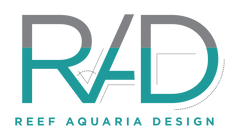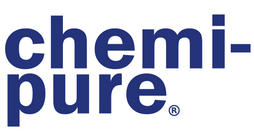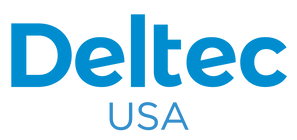Quick video guide to do the Nitrogen Cycle in our Jellyfish Aquarium.
Start pedaling! Let’s get your aquarium properly cycled!
The cycling process is the most important step when setting up a new aquarium and keeping animals healthy. This isn’t a jellyfish-specific task and is required for ALL new saltwater aquariums. New aquariums need to be “seasoned” with beneficial bacteria that handle the organic waste created from daily feedings. An aquarium can quickly become toxic once animals and food are introduced without cycling it.
Before we go into the details of cycling, let do a quick overview of what occurs biologically during the cycling process. Toxic ammonia is converted by bacteria into nitrite, then nitrite is converted by bacteria into nitrate. Nitrate is the final byproduct and will remain in the aquarium. Since nitrate is the last step in the cycle it is also an indicator that a cycle has occurred and that your bacteria colony has grown. For more information on the bacteria itself make sure to read our Blog Post: "The Bacteria You Want to Keep"
Before you start
A water quality test kit will be your best friend during this process. We highly recommend that you purchase a master water quality test kit (avoid the strip tests as they are not accurate). The test kit will tell you exactly what is happening with your water and the results are a clear indicator of the bacterial activity.
Don’t let the science scare you, it’s not as complicated as it sounds!
Let’s get down to the nitty-gritty, when it comes to creating a strong cycle in your Jellyfish Art aquarium there are many different ways to do this! No particular method is necessarily the best way; at the end they all essentially do the same thing. Basically, an ammonia source is provided, then bacteria are added and then time is given for the bacteria to break down the ammonia and nitrites.
STEP #1: Choose Ammonia Source
Once your saltwater has been properly mixed and added to the aquarium, you will be ready to introduce your ammonia source. This is an area of varied opinions, methods and suggestions. Typically, everyone has a different way that they feel is the correct way to accomplish this... hooray controversy! All-in-all, each method works just the same; so, decide which of the following methods you prefer and then stick to it.
Methods:
Let’s jump back to our ammonia source and discuss this a little further. The goal of any of these ammonia sources is to reach an ammonia level of 2 ppm. This level can be tested with the master water quality test kit. Avoid ammonia levels higher than 2 ppm as this can be too much and stall the whole process.
Pick ONE of these methods to introduce amonia into the aquarium:
A) Live brine shrimp - Slowest Method

If you already have the Artemia hatcher that comes with the Jelly Cylinder 5 kit great! If you don’t, then consider getting one as it is a preferred feeding method and is actually a cleaner food source to feed (less maintenance).
To use this as an ammonia source you will hatch 3-4 scoops of brine shrimp eggs in the hatcher. Once they hatch (24-48 hours) start adding all the brine shrimp that hatches. The hatcher should produce for about 3-5 days; just make sure not to move the hatcher so that egg shells don’t make it into the tank. Check your ammonia levels and repeat the hatcher process until the ammonia reaches 2ppm.
B) Tiny piece of raw shrimp

For this method you will need a for human consumption raw shrimp. Cut a 1" chunk of raw shrimp meat from the supermarket and add this in the main display area of the aquarium. Test the ammonia daily until it reaches 2 ppm, once the ammonia reaches 2ppm you remove the piece of shrimp and you add a dose of Jelly Bio Starter. (In this method, avoid reaching ammonia levels higher than 2 ppm as this can delay the cycle process.)
C) Ammonium Chloride drops (Fast method)

This product has been used in aquariums for a long time, it works well, but can easily be overdosed which will ruin the cycle. Follow the manufacturer instructions and dose it slowly, test frequently until 2 ppm of ammonia is reached in the aquarium.
STEP #2: I chose my method now what?
Now that you chose your cycling method, stick to it and give the tank some time. This is the moment where a little bit of patience goes a long way. Ultimately jellies in an un-cycled tank will develop holes and most probably die unless a strict and tedious protocol is applied for a number of weeks.
Test ammonia often (everyday/every other day) and REMOVE AMMONIA SOURCE from the aquarium when the water test reads 2ppm. Once the ammonia source is removed, the ammonia level will start to eventually decline. As ammonia goes down the nitrite will go up. This is good and on the right track! As the process continues your test results will start to indicate nitrates, this means your closer to the finish line. Make sure to keep a log of each water test you preform, you may want to photograph the results for easy access. Maintaining this data is good to identify how the bacteria are behaving.
Note: During the cycle process no water changes should be performed. Water changes will only start after the aquarium has fully cycled.
Note: The Nitrate test kit can yield a false low reading if the test is not done properly. Make sure to follow the instruction in the API booklet that came with your test kit or the instructions in this video:
The tank is fully cycled once your test results read as follows:
0 ppm – Ammonia
0 ppm – Nitrite
20+ ppm - Nitrate (if Nitrate is at zero, the tank is not ready)
STEP #3: Add JellyBio Starter
The second crucial aspect of an aquarium cycle is live beneficial bacteria which will “feed” on ammonia and nitrite. This bacterial process will naturally occur, but to help boost the bacterial activity we add our JellyBio Starter. The 2 oz bottle contains both strains of beneficial bacteria allowing you to speed up the process and help establish the biological filtration (aka bacteria colony) in your aquarium.
Our JellyBio Starter is a live product and expiration date must be observed prior to use. The product should be shaken before using to suspend the bacteria particles. 3 capfuls of Jelly-Bio Starter will treat 2 gallons.
In addition to the JellyBio Starter we highly recommend a weekly addition of JellyBio Maintain. This product will give a bacterial boost through the cycling process and will provide additional bacteria that will help stabilize the water parameters.
If you want to add an extra boost of bacteria, you may consider adding a few small pieces of live rock. Live rock is sold in most marine aquarium stores and contains living microorganisms that can be beneficial to an aquarium. It is important to note that rock should never be placed in the main display area of your aquarium as this can cause injury to the jellies. Instead small pieces 1” in size can be placed in the back of the tank on top of the black sponge where it has a cut out. This method is great, but we will mention that live rock always carries the risk of bringing worms and other critters with it. These critters may or may not be pests, but it’s important to note.
STEP #4: My aquarium is cycled, now what?
Before ordering your new pets make sure to check the nitrate levels. Highly elevated nitrates are not ideal for marine life. Your goal is to keep Nitrate below 20 ppm. After the cycle process, your nitrate levels can be rather high (example: 80 ppm). If your Nitrates read above 40 ppm, perform a 25% water change prior to receiving/redeeming your Jellyfish.
Hooray! You have successfully accomplished a good strong cycle! Your aquarium now contains a strong healthy colony of beneficial bacteria.
STEP #5: Time to redeem your Jellyfish!
Your Jellyfish Redemption code is sent via email upon your original Jellyfish Kit purchase.






